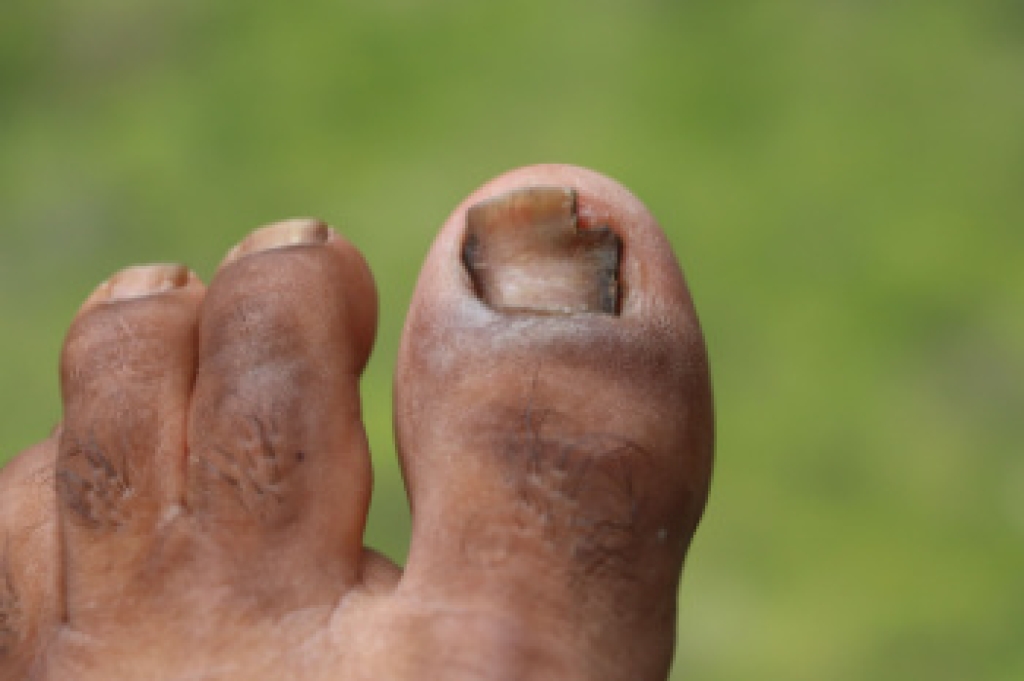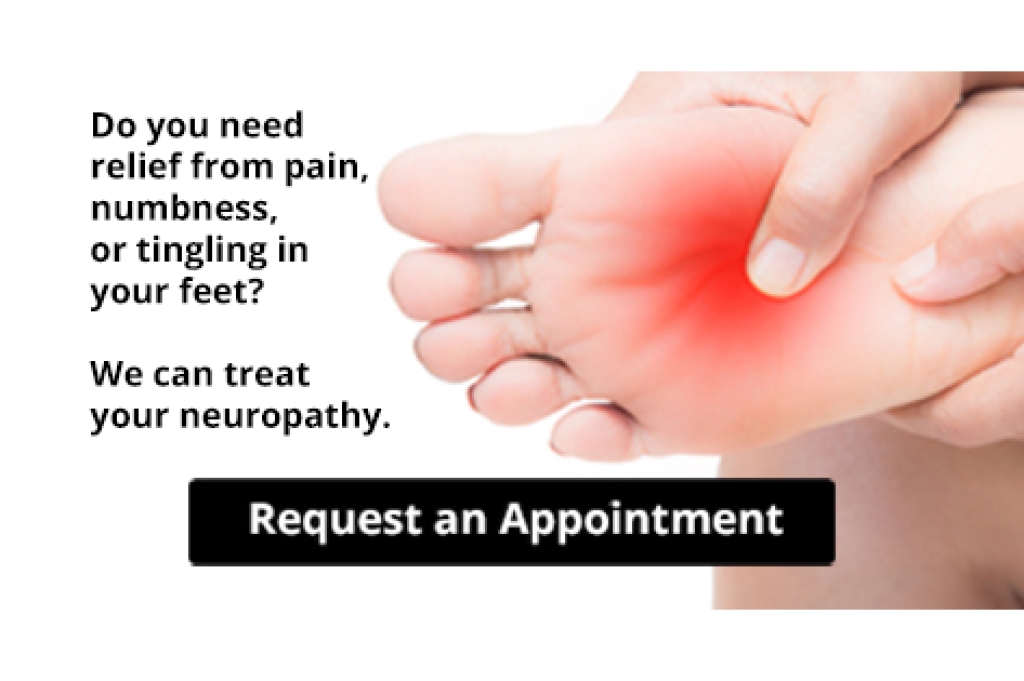Connect With Us
Blog
Blog
Advantages of Seeing a Podiatrist
 Many people may take their foot health for granted, however it is extremely important to take care of your feet in order to prevent issues from arising. Not only can podiatrists help to prevent problems, their extensive knowledge on the feet allows for them to specialize and target their treatments in a more advanced manner as compared to a general practitioner. Podiatrists can help diagnose, treat, and rehabilitate foot related issues, including bunions, heel pain, bone fractures, fungal infections, and ingrown toenails. Podiatrists can also help patients find the proper orthotics to provide support for their feet. Additionally, they can help provide self-care and preventative tips, especially for patients with conditions like diabetes and rheumatoid arthritis. If you are experiencing any issues with the feet, or you want to get ahead of any potential issues, it is suggested that you make an appointment with a podiatrist.
Many people may take their foot health for granted, however it is extremely important to take care of your feet in order to prevent issues from arising. Not only can podiatrists help to prevent problems, their extensive knowledge on the feet allows for them to specialize and target their treatments in a more advanced manner as compared to a general practitioner. Podiatrists can help diagnose, treat, and rehabilitate foot related issues, including bunions, heel pain, bone fractures, fungal infections, and ingrown toenails. Podiatrists can also help patients find the proper orthotics to provide support for their feet. Additionally, they can help provide self-care and preventative tips, especially for patients with conditions like diabetes and rheumatoid arthritis. If you are experiencing any issues with the feet, or you want to get ahead of any potential issues, it is suggested that you make an appointment with a podiatrist.
If you are experiencing pain in the feet or ankles, don’t join the stubborn majority refusing treatment. Feel free to contact Jeffrey Rosenblatt, DPM from New York. Our doctor can provide the care you need to keep you pain-free and on your feet.
What Is a Podiatrist?
Someone would seek the care of a podiatrist if they have suffered a foot injury or have common foot ailments such as heal spurs, bunions, arch problems, deformities, ingrown toenails, corns, foot and ankle problems, etc.
Podiatric Treatment
A podiatrist will treat the problematic areas of the feet, ankle or lower leg by prescribing the following:
- Physical therapy
- Drugs
- Orthotic inserts or soles
- Surgery on lower extremity fractures
A common podiatric procedure a podiatrist will use is a scanner or force plate which will allow the podiatrist to know the designs of orthotics. Patients are then told to follow a series of tasks to complete the treatment. The computer will scan the foot a see which areas show weight distribution and pressure points. The podiatrist will read the analysis and then determine which treatment plans are available.
If you have any questions, please feel free to contact our office located in Brooklyn, NY . We offer the newest diagnostic and treatment technologies for all your foot care needs.
Understanding Osteoarthritis of the Ankle

Ankle osteoarthritis develops when the joint wears down, often years after an earlier ankle injury. Damage from a past sprain or fracture can change how the ankle moves and put more pressure on the joint’s thin layer of cartilage. This can lead to swelling, stiffness, and pain that sometimes spreads into the middle or back of the foot. People may also notice grinding or popping when they point or flex their toes. In addition, the ankle can feel less flexible when walking, especially when wearing flip-flops. Extra body weight and repeated hard impact on the feet put more strain on the ankle and increase discomfort. A podiatrist can examine the ankle joint and order imaging to check the cartilage and ligaments to determine a course of treatment. Options include bracing and inserts for support or surgery when the damage is severe. If you have symptoms of osteoarthritis in the ankles, it is suggested that you make an appointment with a podiatrist for a diagnosis and treatment.
Arthritis can be a difficult condition to live with. If you are seeking treatment, contact Jeffrey Rosenblatt, DPM from New York. Our doctor can provide the care you need to keep you pain-free and on your feet.
Arthritic Foot Care
Arthritis is a joint disorder that involves the inflammation of different joints in your body, such as those in your feet. Arthritis is often caused by a degenerative joint disease and causes mild to severe pain in all affected areas. In addition to this, swelling and stiffness in the affected joints can also be a common symptom of arthritis.
In many cases, wearing ill-fitting shoes can worsen the effects and pain of arthritis. Wearing shoes that have a lower heel and extra room can help your feet feel more comfortable. In cases of rheumatoid arthritis, the arch in your foot may become problematic. Buying shoes with proper arch support that contour to your feet can help immensely.
Alleviating Arthritic Pain
- Exercises that stretch the foot can prevent further pain and injury and increase mobility
- Most of the pain can be alleviated with anti-inflammatory drugs, heat, and topical medications
- Massages can help temporarily alleviate pain.
It is best to see your doctor for the treatment that is right for your needs and symptoms. Conditions vary, and a podiatrist can help you determine the right method of care for your feet.
If you have any questions please feel free to contact our office located in Brooklyn, NY . We offer the newest diagnostic tools and technology to treat your foot and ankle needs.
Foot Pain in Parkinson’s Disease

Foot pain is common in Parkinson’s disease and can affect daily comfort and mobility. Many individuals experience dystonia that leads to toe cramping and curling, along with sore muscles and decreased flexibility that make walking more difficult. Some also develop nerve root pain that causes sharp or burning sensations in the feet. Gentle stretches, including a calf stretch, wall push offs, and ankle stretches, can improve mobility and reduce stiffness when performed regularly. A podiatrist can identify the source of pain, recommend supportive footwear, provide custom orthotics, and create a personalized plan to ease discomfort and improve function. If foot pain from Parkinson’s is affecting your daily life, it is suggested that you schedule a visit with a podiatrist who can offer relief tips, and help you to manage this condition.
Foot Pain
Foot pain can be extremely painful and debilitating. If you have a foot pain, consult with Jeffrey Rosenblatt, DPM from New York. Our doctor will assess your condition and provide you with quality foot and ankle treatment.
Causes
Foot pain is a very broad condition that could be caused by one or more ailments. The most common include:
- Bunions
- Hammertoes
- Plantar Fasciitis
- Bone Spurs
- Corns
- Tarsal Tunnel Syndrome
- Ingrown Toenails
- Arthritis (such as Gout, Rheumatoid, and Osteoarthritis)
- Flat Feet
- Injury (from stress fractures, broken toe, foot, ankle, Achilles tendon ruptures, and sprains)
- And more
Diagnosis
To figure out the cause of foot pain, podiatrists utilize several different methods. This can range from simple visual inspections and sensation tests to X-rays and MRI scans. Prior medical history, family medical history, and any recent physical traumatic events will all be taken into consideration for a proper diagnosis.
Treatment
Treatment depends upon the cause of the foot pain. Whether it is resting, staying off the foot, or having surgery; podiatrists have a number of treatment options available for foot pain.
If you have any questions, please feel free to contact our office located in Brooklyn, NY . We offer the newest diagnostic and treatment technologies for all your foot care needs.
Clearing Up Stubborn Toenail Fungus

Toenail fungus often begins quietly, showing up as a small change in color or texture before spreading deeper into the nail. Over time, the nail can become thick, brittle, and difficult to trim, and shoes may feel uncomfortable because of pressure on the affected area. Warm, moist environments encourage fungal growth, which is why people who wear closed shoes for long hours or visit communal spaces like gyms and pool areas are more at risk. Although over-the-counter products can be tempting, established fungal infections rarely clear without professional care. A podiatrist can confirm the diagnosis, thin the nail if needed, and recommend targeted treatments that reach the source of the problem more effectively. Addressing the issue early can prevent pain, nail deformity, and spread to other toes. If you notice persistent discoloration, thickening, or crumbling of a toenail, it is suggested that you see a podiatrist for a proper diagnosis and appropriate treatment.
If left untreated, toenail fungus may spread to other toenails, skin, or even fingernails. If you suspect you have toenail fungus it is important to seek treatment right away. For more information about treatment, contact Jeffrey Rosenblatt, DPM of New York. Our doctor can provide the care you need to keep you pain-free and on your feet.
Symptoms
- Warped or oddly shaped nails
- Yellowish nails
- Loose/separated nail
- Buildup of bits and pieces of nail fragments under the nail
- Brittle, broken, thickened nail
Treatment
If self-care strategies and over-the-counter medications does not help your fungus, your podiatrist may give you a prescription drug instead. Even if you find relief from your toenail fungus symptoms, you may experience a repeat infection in the future.
Prevention
In order to prevent getting toenail fungus in the future, you should always make sure to wash your feet with soap and water. After washing, it is important to dry your feet thoroughly especially in between the toes. When trimming your toenails, be sure to trim straight across instead of in a rounded shape. It is crucial not to cover up discolored nails with nail polish because that will prevent your nail from being able to “breathe”.
In some cases, surgical procedure may be needed to remove the toenail fungus. Consult with your podiatrist about the best treatment options for your case of toenail fungus.
If you have any questions please contact our office located in Brooklyn, NY . We offer the newest diagnostic and treatment technologies for all your foot and ankle needs.
Blog Archives
- 2025
- 2024
- 2023
- 2022

